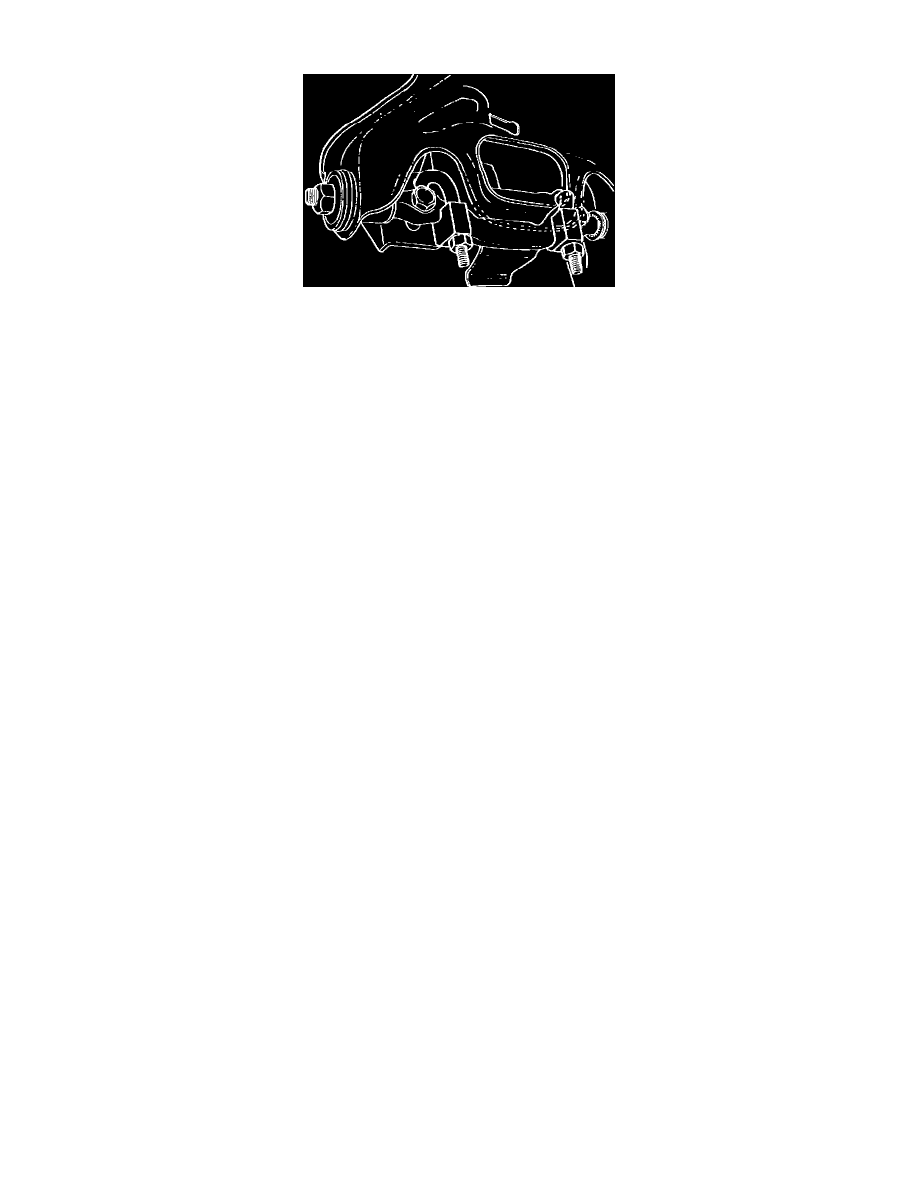Colony Park V8-302 5.0L VIN F FI (1985)

Alignment: Service and Repair
Fig. 1 Adjusting caster & camber
Wheel balancing differs on vehicles with disc brakes, dynamic balancing of the wheel-and-tire assembly on the vehicle should not be attempted
without first pulling back the shoe and lining assemblies from the rotor. If this is not done, brake drag may burn out the motor on the wheel spinner.
The drag can be eliminated by removing the wheel, taking out the two bolts holding the caliper splash shield, and detaching the shield. Then push the
pistons into their cylinder bores by applying steady pressure on the shoes on each side of the rotor for at least a minute. If necessary, use water pump
pliers to apply the pressure. After the pistons have been retracted, reinstall the splash shield and wheel. The wheel-and-tire assembly can then be
dynamically balanced in the usual way. After the balancing job has been completed, be sure to pump the brake pedal several times until the shoes are
seated and a firm brake pedal is obtained. Caster and camber can be adjusted by loosening the bolts that attach the upper suspension arm to the shaft at
the frame side rail, and moving the arm assembly in or out in the elongated bolt holes, Fig. 1. Since any movement of the arm affects both caster and
camber, both factors should be balanced against one another when making the adjustment. Use alignment tool T79P-3000A or equivalent, Fig. 1.
Install the tool with the pins in the frame holes and the hooks over the upper arm inner shaft. Tighten the hook nuts snug before loosening the upper arm
inner shaft attaching bolts.
CASTER, ADJUST
1.
Tighten the tool front hook nut or loosen the rear hook nut as required to increase caster to the desired angle.
2.
To decrease caster, tighten the rear hook nut or loosen the front hook nut as required. The caster angle can be checked without tightening the
inner shaft retaining bolts.
3.
Check the camber angle to be sure it did not change during the caster adjustment and adjust if necessary.
4.
Torque the upper arm inner shaft retaining bolts to 120---140 ft. lbs. and remove tool.
CAMBER, ADJUST
1.
Loosen both inner shaft retaining bolts.
2.
Tighten or loosen the hook nuts as necessary to increase or decrease camber.
3.
Recheck caster and readjust if necessary.
4.
Torque upper arm inner shaft retaining bolts to 120---140 ft. lbs.
TOE-IN, ADJUST
Position the front wheels in their straight-ahead position. Then turn both tie rod adjusting sleeves an equal amount until the desired toe-in setting is
obtained. Torque tie rod sleeve clamp bolt to 20---22 ft. lbs.
